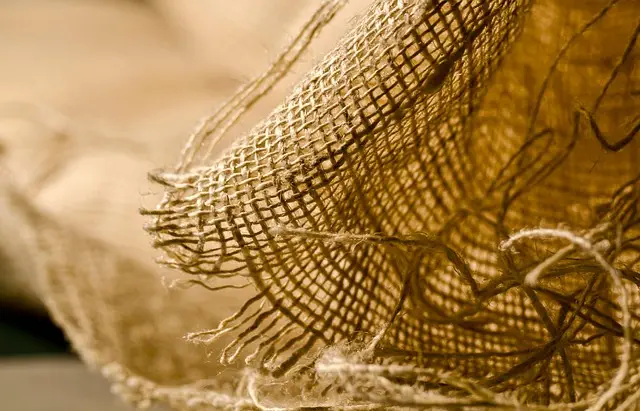Muscle soreness after exercise, especially delayed onset muscle soreness (DOMS), is common and can be uncomfortable. The green Hulu Kapuas kratom strain has gained popularity as a natural remedy due to its analgesic properties. This strain, rich in mitragynine and 7-hydroxymitragynine, offers relief without drowsiness. Reviews highlight its effectiveness for muscle soreness and overall well-being, making it a preferred choice among users. While scientific evidence is limited, studies suggest kratom's interaction with opioid receptors may reduce inflammation and pain. To use kratom responsibly, start with low doses (1-3 grams), follow consistent timing, and consult healthcare professionals, especially with pre-existing conditions.
Experience muscle soreness relief with kratom—a natural herb gaining popularity for its potential therapeutic benefits. This comprehensive guide explores how kratom, particularly the Green Hulu Kapuas strain, can alleviate post-workout aches and pains. We delve into the science behind its effects, offering insights on dosage, preparation, and side effects to ensure safe and effective use. Discover why this ancient plant may be a modern solution for muscle recovery.
- Understanding Muscle Soreness and Its Causes
- What is Kratom? An Overview of the Plant and its Compounds
- The Green Hulu Kapuas Strain: Characteristics and Benefits
- Scientific Evidence: Does Kratom Help with Muscle Soreness?
- How to Use Kratom for Optimal Relief: Dosage and Preparation
- Potential Side Effects and Precautions: What You Should Know
Understanding Muscle Soreness and Its Causes

Muscle soreness, also known as delayed onset muscle soreness (DOMS), is a common issue that occurs after strenuous physical activity or exercise. It’s characterized by a feeling of pain and stiffness in the affected muscles, usually peaking 24-72 hours post-workout. This condition is a natural response of your body to the stress placed on it during intense activities, as tiny tears form in muscle fibers, leading to inflammation and subsequent discomfort.
Several factors contribute to muscle soreness, including exercise intensity, duration, and type, as well as individual differences in recovery abilities. New or unfamiliar exercises, improper form, and excessive training without adequate rest can all increase the likelihood of experiencing DOMS. The green Hulu Kapuas strain, a popular kratom variety known for its potent analgesic properties, has been reviewed positively by users seeking natural relief from muscle soreness. Its unique blend of alkaloids offers a potential herbal solution to help alleviate discomfort and promote faster recovery.
What is Kratom? An Overview of the Plant and its Compounds

Kratom, scientifically known as Mitragyna speciosa, is a tropical tree native to Southeast Asia, particularly Thailand, Malaysia, and Indonesia. Its leaves contain a range of chemical compounds that have been the subject of both scientific study and traditional use for centuries. Among these compounds, alkaloids play a significant role in kratom’s effects on the body. The most abundant alkaloid in kratom is mitragynine, known for its analgesic (pain-relieving) properties. Other notable alkaloids include 7-hydroxymitragynine and mitrapyridine, each contributing to the plant’s diverse biological activities.
One well-known strain of kratom, the Green Hulu Kapuas, has garnered attention for its potential benefits in alleviating muscle soreness. This strain is renowned for its balanced combination of mitragynine and 7-hydroxymitragynine, which may work synergistically to provide a gentle yet effective analgesic effect. Reviews of the Green Hulu Kapuas strain often highlight its relaxing properties without causing drowsiness, making it a preferred choice for those seeking relief from muscle discomfort while remaining alert.
The Green Hulu Kapuas Strain: Characteristics and Benefits

The Green Hulu Kapuas (GHK) strain is renowned among kratom enthusiasts for its potent analgesic and anti-inflammatory properties, making it a top choice for muscle soreness relief. This particular strain hails from the Indonesian province of Kalimantan, known for its rich biodiversity and high-quality kratom plants. GHK stands out for its unique composition, containing higher levels of 7-hydroxymitragynine (7-HMG), a potent alkaloid with significant therapeutic benefits.
In terms of effects, Green Hulu Kapuas is often described as offering a balanced combination of stimulating and relaxing properties. While it can provide an energetic boost, it also has a calming effect on the body, helping to alleviate muscle tension and pain. Many users report experiencing a deep sense of relaxation without the heavy sedative effects sometimes associated with other kratom strains. This makes GHK particularly appealing for those seeking natural relief from chronic muscle soreness or post-workout discomfort. Reviews consistently highlight its ability to enhance overall well-being, making it a popular choice in the Kratom community.
Scientific Evidence: Does Kratom Help with Muscle Soreness?

Kratom, a natural herb derived from the plant Mitragyna speciosa, has gained attention for its potential benefits in managing muscle soreness. While many users claim relief, scientific evidence supporting its efficacy is mixed. Some studies suggest that kratom’s active compounds, particularly mitragynine and 7-hydroxymitragynine, may interact with opioid receptors in the body, offering pain-relieving effects. These compounds could potentially reduce muscle inflammation and ease discomfort associated with soreness.
The green Hulu Kapuas strain, renowned for its balanced profile of mitragynine and 7-hydroxymitragynine, has been a subject of interest among users seeking muscle recovery. Reviews highlight its effectiveness in providing mild pain relief without the sedative effects often associated with kratom. However, controlled research specifically targeting muscle soreness is limited. Further studies are needed to conclusively determine the mechanism behind kratom’s potential benefits and its comparability to traditional sore muscle remedies.
How to Use Kratom for Optimal Relief: Dosage and Preparation

To get the most out of kratom for muscle soreness relief, understanding proper dosage and preparation methods is crucial. Start by experimenting with a low dose, typically around 1-3 grams, to gauge your body’s response. This gentle approach allows you to monitor any potential side effects while still offering some pain-relieving benefits. The green Hulu Kapuas strain, known for its balanced profile, can be an excellent starting point, providing both analgesic and stimulating effects.
Prepare kratom by steeping it in hot water, similar to making tea. This process releases the active compounds. Many users find that a warm bath or shower with a small amount of kratom-infused water enhances muscle relaxation. Additionally, combining kratom with other natural anti-inflammatory ingredients like ginger or turmeric can amplify its soothing effects. Regular use and consistency in timing are key; consider taking it at specific times during the day for optimal relief and to avoid any disruptive side effects.
Potential Side Effects and Precautions: What You Should Know

While kratom is often praised for its potential benefits in alleviating muscle soreness, it’s crucial to be aware of potential side effects and precautions before incorporating it into your routine. As with any natural remedy, individual responses can vary, and what works for one person might not work for another. One popular strain, the Green Hulu Kapuas, is renowned for its pain-relieving properties, but reviews highlight that it may also cause mild side effects like dizziness, nausea, or restlessness in some users. These sensations are usually temporary and subside as your body adjusts.
However, it’s essential to use kratom responsibly. Dosage is critical; starting with smaller amounts and gradually increasing can help minimise potential adverse reactions. Additionally, those with certain health conditions, such as liver or kidney issues, should exercise extreme caution. Pregnant or breastfeeding women are generally advised against using kratom due to a lack of extensive research on its effects. Always consult a healthcare professional before adding any new supplement to your regimen, especially if you’re managing existing health concerns.
Kratom, particularly the Green Hulu Kapuas strain, offers a promising natural alternative for managing muscle soreness. With its unique blend of alkaloids, this plant has gained attention for its potential therapeutic benefits. While more research is needed, existing scientific evidence suggests that kratom may effectively alleviate post-exercise muscle pain. By understanding its proper usage and considering the dosage guidelines, individuals can harness the power of Green Hulu Kapuas to enhance their recovery process, ensuring a healthier and more active lifestyle.






